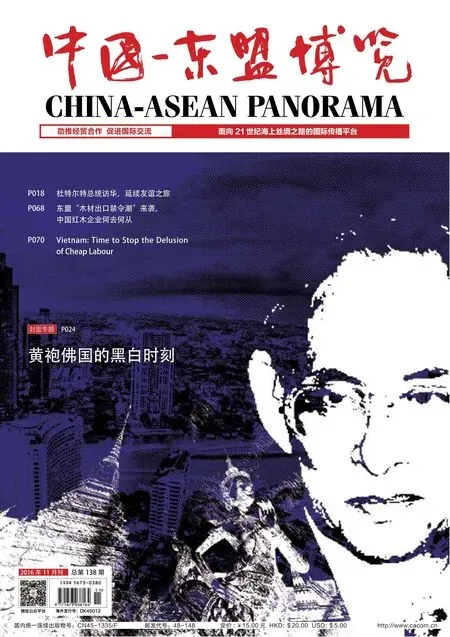Build Cultivation-Processing-Sale Industrial Chain to Boost China-Cambodia Rice Trade --Interview with the General Manager of Guangxi Guohong Development Corporation Li Qian
Written by Gan Quan / Translated by Mao Yuye
Build Cultivation-Processing-Sale Industrial Chain to Boost China-Cambodia Rice Trade --Interview with the General Manager of Guangxi Guohong Development Corporation Li Qian
Written by Gan Quan / Translated by Mao Yuye
Guangxi Guohong Development Corporation is one of the major going-global companies in Guangxi. The General Manager of Guangxi Guohong Development Corporation Ms. Li Qian took the interview with China-ASEAN Panorama to talk about how Guohong does and will do to deepen agricultural cooperation with Cambodia and to become an active player of the Belt and Road to benefi t the two peoples.
Seed selection for guaranteeing rice quality
China and Cambodia signed a protocol for the inspection and quarantine of Cambodian rice export to China in 2010. The protocol broke down the barriers directly hindering the export of Cambodian rice to China and turned the rice trade into the new growth point of the economic and trade cooperation between the two countries. However, Cambodia’s current technology & equipment for rice cultivation and the quality of seeds still need to be improved to meet the export demand.
In this regard, Guohong Corporation hired agricultural professionals and experts from China to select and cultivate the seeds of rice in Cambodia. Guohong also worked with Cambodian rice growers to build the native rice cultivation base. Li Qian said, “We are now building the bases for rice seed and fragrant rice cultivation in three provinces in Cambodia — Kandal, Kampong Thom and Kampong Speu. Next we will expand cooperation with two rice-producing provinces of Cambodia — Battambang and Pursat: we will train for free 300 or more Cambodian farmers and help them learn China’s advanced rice cultivation technologies.” Then Guohong plans to work with local rice growers to set up cooperatives, organizing farmers to carry on activities of sowing, fertilizing, plough, and harvesting with modern machines.
Build rice processing plants to level up the rice processing
At the very beginning, due to the backward cultivation and processing technology, most of nearly 30,000 rice mills cannot meet the international standards for rice.
Guohong started to build a rice processing plant in Cambodia in 2010 and the rice processing plant was in operation in July 2012, with the processing volume of 150 tons per day, the rice production volume of 100 tons per day, and the annual production of 30,000 tons.
Li introduced that the processing plant has attained tangible economic and social benefi ts, creating more than 100 jobs for local Cambodian people and spending over US$ 5 million in purchasing raw rice annually.
Take advantage of CAEXPO to promote the native Cambodian rice
Different from Thai rice and Vietnamese rice, the reputation of which has been increasing across ASEAN area or even the world, Cambodian rice still needs to improve its brand building and enlarge its popularity. It is an important objective for Guohong to promote high-quality Cambodian rice to China’s market.
“As the pioneer Cambodian rice seller in China, we are striving for the establishment and promotion of the Cambodian rice brand, but we feel it very necessary to attain support from the government because our efforts are limited. Fortunately, thanks to the effective communicating channel CAEXPO, our products got increasingly known to the public and we gained more business opportunities,” said Li. According to the incomplete statistics, about four tons of Guohong’s “Siem Reap Jasmine Rice” was sold at the 13thCAEXPO.
Advance the building of modern regional agricultural parks
When it comes to the plan for the coming days, Li said Guohong is to complete the building of rice processing plants, and then to develop a modern regional agriculture industrial park equipped with a function center for rice cultivation, acquisition, storage and processing and a logistics center for agricultural production materials.
At the advantage of Guohong’s investment experience and management personnel, the industrial park will serve as a platform for companies of the two countries to invest in China-Cambodia agricultural cooperation by providing services involving policy consulting, information, suggestions for risk examination and investment documentation. Besides, sound regulation and operating system should be tailored for inviting Chinese competitive companies to invest in Cambodian agriculture, to create market-fitting industrial chains and clusters, and thus to boost local economic development and achieve win-win bilateral cooperation.

